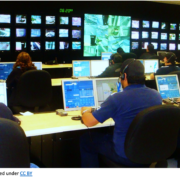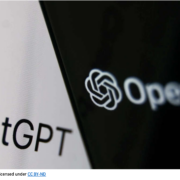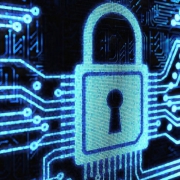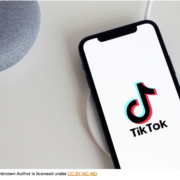The Benefits and Risks of AI in 911 Call Centers
by CHHS Extern Katie Mandarano
Across the United States, 911 call centers are facing a workforce crisis. In the U.S., there are more than 6,000 911 call centers, with over 35,543 911 operators currently employed. According to a survey by the International Academies of Emergency Dispatch (IAED), more than 100 call centers reported that at least half of their positions were unfilled in 2022. The report also found that almost 4,000 people left their jobs across the call centers surveyed. This means that about 1 in 4 jobs at these call centers remain vacant.
The reasons for such a labor shortage can likely be attributed to a combination of factors:
- These jobs are hard to fill, applicants have to undergo rigorous background checks and screenings and once hired, dispatchers face a lengthy training process, ranging anywhere from three to eighteen months before they are allowed to take calls without supervision.
- Dispatchers have to work long hours and are often forced to work overtime hours because these centers are so short staffed.
- Despite the long hours and high stress, the S. Bureau of Labor reported the median annual pay for public safety telecommunicators as only $46,900 in the year 2022.
- These jobs are incredibly high stress, with studies showing that the repeated exposure to 911 calls can lead to the development of Post-Traumatic Stress Disorder.
- There has been an overall increase in 911 calls. On average, an estimated 240 million 911 calls are made in the U.S. each year. Moreover, with developments in technology there are now a variety of emergency features that have led to an increase in 911 misdials, such as the Apple Watch system that automatically sends a 911 call if it detects a vehicle crash.
Due to the severe labor shortage facing 911 call centers, some state and local governments have turned to artificial intelligence (AI) as a potential solution to assist 911 dispatchers, or in some cases, replace the presence of a human dispatcher. AI is essentially a machine’s ability to perform tasks that typically require human intelligence. Below are some examples of how AI could be used in 911 dispatching:
- AI could be used to enhance the audio quality of 911 calls, allowing dispatchers to better understand callers and respond quicker to callers’ needs, in turn allowing dispatchers to field more 911 calls.
- AI can triage incoming 911 calls based on the call’s urgency, reducing the number of non-emergency calls, and ensuring calls are routed to the appropriate dispatchers and first responders. This would free up human dispatcher availability for the most pressing 911 calls. Moreover, some states do not just have AI triaging incoming calls, but actually answering and gathering information from non-emergency calls, replacing the need for a human dispatcher.
- AI can create real-time maps of emergencies, which can be shared with other emergency services when responding to the scene. Because dispatchers typically stay on the phone with 911 callers until first responders reach the scene, improving the speed at which first responders can reach an emergency, will in turn, allow human dispatchers to assist more callers.
- AI can provide real-time language translation for non-English speakers, quickening a dispatchers’ response time, as well as reducing the need for translators and non-English speaking dispatchers.
- AI can integrate 911 dispatching with other technology such as, Internet of Things devices and smart city infrastructure to provide real-time information about the conditions surrounding an emergency. This would similarly result in quicker response times, freeing up dispatchers to field more calls.
It clear from the few examples listed above, that the potential benefits of AI in 911 dispatching are significant. But using AI in 911 dispatching also poses several unique challenges. One of these challenges includes maintaining 911 callers’ data privacy and security.
Congress has recognized the need for the country to transition to a Next Generation 911 (NG911) system, which is expected to enable transmission of photos, videos, health records, cell-site location information, and other data to support first responders and emergency personnel during a 911 call. Accordingly, an unprecedented amount of data could be used to train AI systems in 911 call centers, and this practice would be encouraged, as the more data an AI system has access to, generally the more accurate its output. Additionally, 911 calls typically contain sensitive personal information and AI would likely be used to de-anonymize this personal data where necessary. Thus, call centers which use AI systems become an increasingly attractive target for cyberattacks and data leaks.
In addition to data privacy and security concerns, implementing AI in 911 call centers creates data accuracy concerns. Underrepresentation of certain groups in data sets used to train AI can result in inaccurate outcomes and harmful decisions. For example, researchers have found that smart speakers often fail to understand female or minority voices because the algorithms are built from databases containing primarily white male voices. In an emergency setting, one can see how this barrier could have serious implications, such as determinative delays in emergency services or inefficient assistance for non-white male 911 callers.
The unique risks discussed above require government protection and safeguards. Accordingly, state governments using this technology should take care to implement privacy and cybersecurity standards to ensure this information is not subject to misuse, and that the AI is built using accurate, fair, and representative data sets. Some potential insurance measures include:
- Adopting comprehensive data minimization rules, such as a deletion requirement to ensure that call centers do not store precise location data for longer than necessary.
- Requiring cybersecurity maturity assessments, ensuring that these call centers have procedures in place to strengthen security program efforts.
- Implementing quality standards for data sets used to train AI to ensure datasets are broad and inclusive.
While AI has the potential to revolutionize 911 dispatching, it is important to consider the risks to data privacy, accuracy, and security when implementing these technologies. With a thoughtful and regulated approach, AI in 911 call centers can provide much needed relief to the 911 dispatcher workforce in this time of need.









